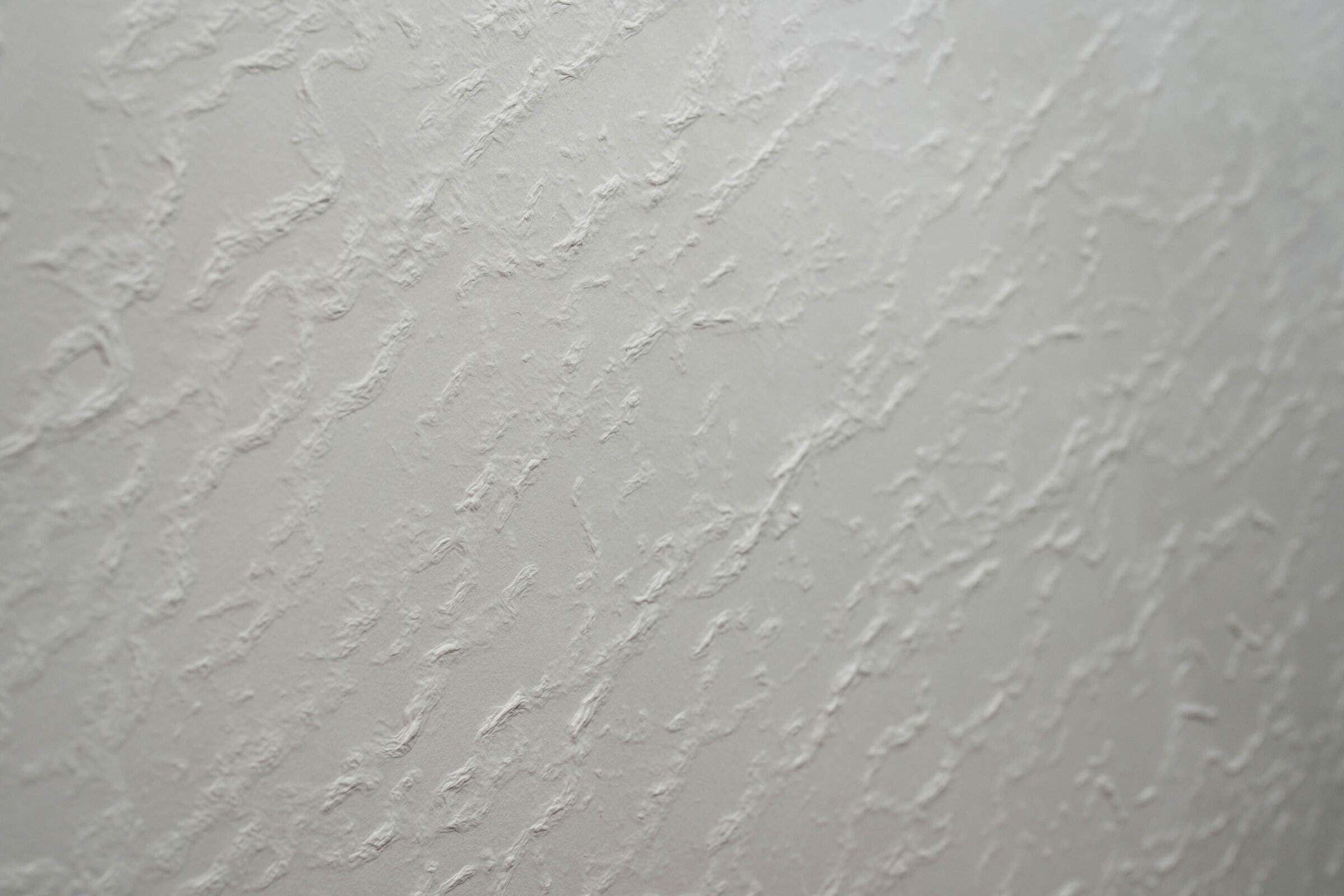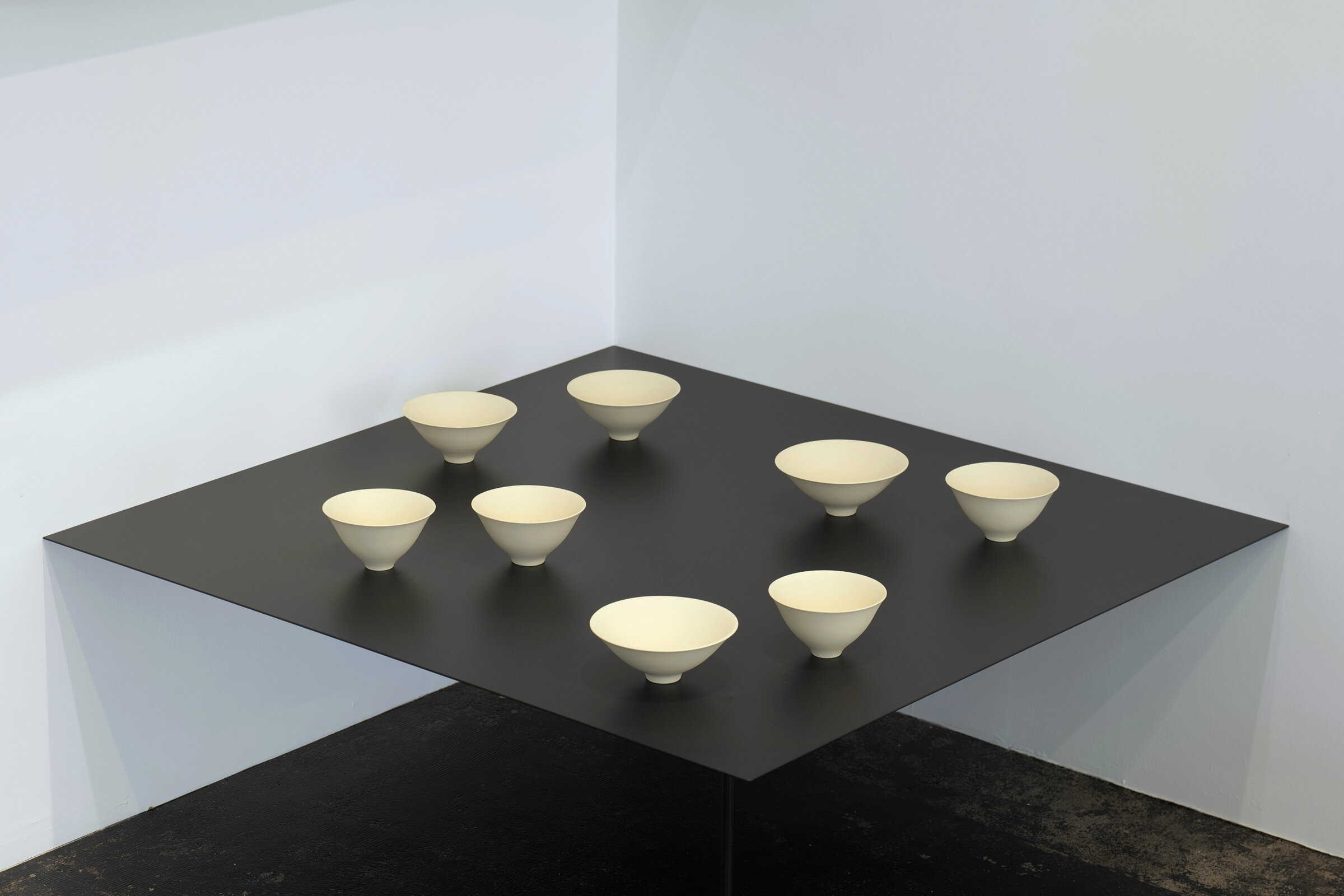Japan’s Modern Crafts Movement

Involving a string of high-profile creative directors, craftspeople and new generation artists, new festival Go for Kogei offers a contemporary take on Japan’s heritage of craft in the modern world. We explore its landmark design exhibition, and speak with participating designer Kenya Hara about his thoughts on modern craft
Rei Shito and Takahashi Yuma’s re-LIFE series of plates at Noetica gallery
An abstract expanse of washi wallpaper replicating a kimono textile. Antique plates with new splashes of contemporary lacquer. A curtain of white netting containing fragments of handcrafted glass. These are among a string of innovations in the spotlight at Crafts and Design: Kogei in Daily Life, a new exhibition exploring the creative dynamic between Japanese craft and design.
The event is one of two large-scale exhibitions that form the heart of Go for Kogei, a new festival offering a modern perspective on the rich heritage of crafts (kogei in Japanese) in the Hokuriku region, spanning Toyama, Ishikawa and Fukui prefectures.
The second exhibition — The Future of Craft Aesthetics’ Kogei, Contemporary Art, and Art Brut — focuses on the overlap of crafts and contemporary art, with work by 20 Japanese artists using kogei craft techniques showcased in two centuries-old temples and a shrine.
Meanwhile, the Crafts and Design exhibition, held at two venues in Kanazawa, involved 13 renowned creative directors being matched with traditional artisans and producers in the region with the goal of creating a new product.
‘I would like the world to know more about the crafts that have been developed in Japan for a long time,’ explains Yuji Akimoto, the festival’s special exhibition curator and former director of 21st Century Museum of Contemporary Art in Kanazawa. ‘A new possibility for design is to make use of the handicraft-like craft that has remained in Japan. This is an attempt to create a product that will become a part of people's daily lives.’
For a project at SKLo gallery, Masataka Hosoo — 16th-generation head of innovative Kyoto textile company HOSOO — worked with washi producer Taki Paper, which dates back to 1875, to create a paper version of HOSOO’s Wave2 fabric, a serene expanse of off-white washi with textural water-inspired motifs.
Akira Minagawa, the designer behind minä perhonen, and Toyama-based American glass artist Peter Ivy also made a poetic tapestry-style installation of a delicately white mosquito net textile, known as kaya, containing fragments of handcrafted glassware.
Meanwhile, highlights at nearby gallery Noetica included a collaboration between fashion photographer Rei Shito and new generation Kanazawa-based lacquer artist Takahashi Yuma, resulting in re-LIFE, a series of antique plates enhanced with bold touches of lacquerware motifs.
Designer Kenya Hara was also partnered with Taniguchi Seidosho, producers of porcelain clay for Kutani ceramics for seven decades, to create his very first bowl. Here, Hara speaks with us about the creative process and the value of kogei in the modern world.
Design Anthology: What is the basic concept behind these vessels?
Kenya Hara: Taniguchi Koichi of Taniguchi Seidosho wanted to make a product purely from Hanasaka porcelain clay. So we tried to make a bowl made of one hundred per cent Hanasaka porcelain with a slight beige colour. It’s too beige to be called a white bowl, but ‘white’ in this case isn’t the whiteness but the purity of the clay.
What was the starting point and how did the collaborative process unfold?
A vessel made on the potter's wheel is a revolving object, which means that we must define a single curve from the rim to the base. This project was an attempt to find one line from among the vast accumulation of lines produced endlessly since humankind’s distant past.
For me, this would be my first line, my first bowl. As I’m a designer, I don’t touch the clay directly like a craftsman. I thought that I should refrain from such amateurish behaviour. Instead, I made a series of sketches, examined them in computer graphics, and then printed them out on a 3D printer to determine the shape. The process took about four months.
What was the most challenging aspect and the most rewarding?
The most difficult part of the process was forming the four bowls on the wheel into the intended shape, which I entrusted to Mr Azuma, the potter, to do precisely. Mr Azuma's technique is amazing, and I was very impressed when I received the four white porcelain bowls with exactly the lines I wanted. The designer decided the shape and the craftsman materialised it. I felt the possibility of this kind of division of labour.
What was your intention with the final vessels? And how did you feel about the end result?
For me, it was an experience to intervene as a designer in the traditional production process of a vessel. It was a unique opportunity, and I was able to get a real feel for the artisan’s craft in my own creative process. It was wonderful. The bowl will be designed as ‘information’ in the form of a product in the future, the sales method will be planned and implemented, and the goal is to create an ecosystem, so the process has just begun.
What does the word kogei (crafts) mean to you? And what role can kogei play in today’s modern world?
It’s a value that has been carefully preserved for a long time, and a skill and sensitivity that will continue to be preserved in the future. What has been nurtured by the local culture will enrich the world in the future, if its value is understood not only by the local people but also by the wider world.
What message do you hope this exhibition will convey to the world about kogei and its intersection with design, in modern times?
Japan is a country with more than a thousand years of historical miracles, a treasure trove of authenticity, so to speak. We want design to play a role in making the essence of the technology visible, rather than twisting it in the direction of modernisation. ‘Global’ and ‘local’ are not antonyms but are combined to form a single value. In this age of globalisation, we want to open up an era in which local values are discovered and shared by people around the world.
Go for Kogei runs until October 24, 2021
Text / Danielle Demetriou
Images / Masahiro Katano
Masataka Hosoo and Taki Paper’s wallpaper at SKLo gallery
Masataka Hosoo and Taki Paper’s wallpaper at SKLo gallery
Masataka Hosoo and Taki Paper’s wallpaper at SKLo gallery
Masataka Hosoo and Taki Paper’s wallpaper at SKLo gallery
Masataka Hosoo and Taki Paper’s wallpaper at SKLo gallery
Masataka Hosoo and Taki Paper’s wallpaper at SKLo gallery
Akira Minagawa and Peter Ivy at SKLo
Akira Minagawa and Peter Ivy at SKLo
Akira Minagawa and Peter Ivy at SKLo
Akira Minagawa and Peter Ivy at SKLo
Akira Minagawa and Peter Ivy at SKLo
Akira Minagawa and Peter Ivy at SKLo
Rei Shito and Takahashi Yuma’s re-LIFE series of plates at Noetica gallery
Rei Shito and Takahashi Yuma’s re-LIFE series of plates at Noetica gallery
Rei Shito and Takahashi Yuma’s re-LIFE series of plates at Noetica gallery
Rei Shito and Takahashi Yuma’s re-LIFE series of plates at Noetica gallery
Rei Shito and Takahashi Yuma’s re-LIFE series of plates at Noetica gallery
Kenya Hara’s bowl, created with Taniguchi Seidosho
Kenya Hara’s bowl, created with Taniguchi Seidosho
Kenya Hara’s bowl, created with Taniguchi Seidosho
Kenya Hara’s bowl, created with Taniguchi Seidosho































